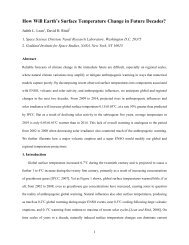Hale Sector Boundaries.pdf - Leif and Vera Svalgaard's
Hale Sector Boundaries.pdf - Leif and Vera Svalgaard's
Hale Sector Boundaries.pdf - Leif and Vera Svalgaard's
- No tags were found...
You also want an ePaper? Increase the reach of your titles
YUMPU automatically turns print PDFs into web optimized ePapers that Google loves.
Svalgaard et al.Figure 4. The average magnetogram for a nominal (+,-) <strong>Hale</strong> boundary in the northernhemisphere. 910 magnetograms superposed on 765 sector boundaries for the WSO observations1976-2010. Some Data has been mirrored <strong>and</strong> sign-reversed as described in section 2.3. Thesector boundary is marked by the semi-transparent bar.To bring out the essential features of the patterns so clearly seen in Figures 2<strong>and</strong> 3 we first mirror the data in Figure 2 about the equator. We then reverse thesign of the photospheric field for magnetograms superposed on (-,+) boundaries.Finally, we construct the average of all magnetograms data so treated. Theresult (Figure 4) shows (left) what the average sector boundary looks like in thephotosphere <strong>and</strong> (right) the magnitude of the field, now for a nominal (+,-) <strong>Hale</strong>boundary.3. Evolution with Phase of the Solar CycleThe large-scale sector structure, observed in the corona <strong>and</strong> beyond, originatesfrom extended magnetic fields on both sides of a <strong>Hale</strong> boundary in the photosphere(Figure 4) where the field strength is high. This means that the sourcesof a solar sector is largely limited to one hemisphere, namely where the polaritychange matches that of the <strong>Hale</strong> polarity rule.With the large amount of data from several cycles it is possible to studyhow the structures seen in the averaged magnetograms (Figure 4) vary with thephase of the cycle. We divide a cycle into the ascending phase (first third of thecycle), maximum (second third), <strong>and</strong> declining phase (last third) <strong>and</strong> computethe averages for each in the same way as for Figure 4. The result is shown inFigure 5. The same general behavior is seen regardless of phase with the expectedvariation of field strength over the cycle: Weaker during the ascending phase,strongest at maximum, <strong>and</strong> weakest during the declining phase. The equatorwardprogression of the sector with the progress of the cycle as well as Joy’s laware clearly discernible. Note the reversal of polar field polarity.SOLA: <strong>Hale</strong>Bx.tex; 21 July 2010; 7:55; p. 6




![When the Heliospheric Current Sheet [Figure 1] - Leif and Vera ...](https://img.yumpu.com/51383897/1/190x245/when-the-heliospheric-current-sheet-figure-1-leif-and-vera-.jpg?quality=85)

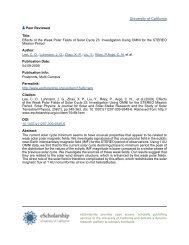

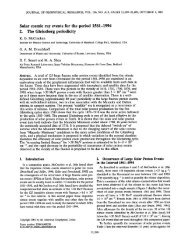
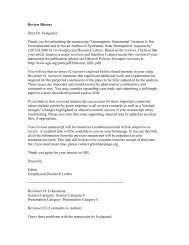

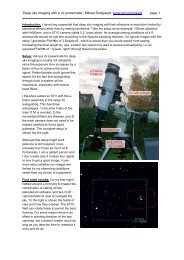
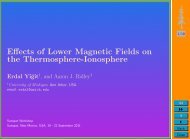
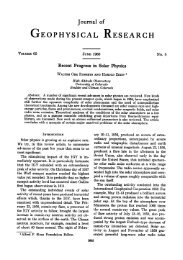
![The sum of two COSine waves is equal to [twice] the product of two ...](https://img.yumpu.com/32653111/1/190x245/the-sum-of-two-cosine-waves-is-equal-to-twice-the-product-of-two-.jpg?quality=85)
